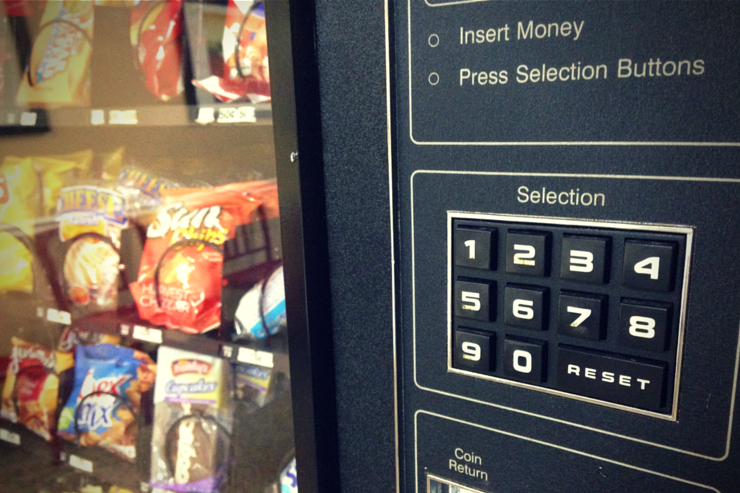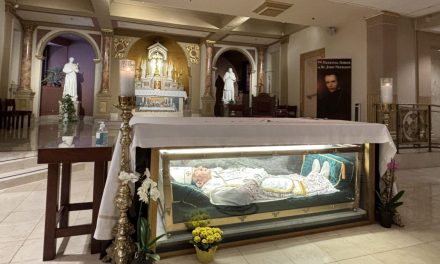My diocese was given a unique Thanksgiving present this year by Pope Francis. After our bishop died in June, we entered that uncertain time of vacancy in the diocese, that time of transition while waiting for a new bishop. We all had much to be thankful for this Thanksgiving when the Pope gave us our new shepherd the Tuesday before the holiday.
While waiting for the press conference the morning of the announcement, I was watching the local news crews set up their cameras. I couldn’t help but wonder what non-Catholics would think of this. Did they view him as simply a new COO for the diocese that just happened to be picked for us by someone across the ocean?
He is that, of course. Especially for those of us who work directly for the diocese, we are greeting him as our new boss. But he is much more than that. He is our shepherd.
Repeatedly throughout the New Testament, Christ speaks of Himself as the Good Shepherd. This is not a new image to His audience. They were quite familiar with the image of “shepherd” being applied to their leaders. In Numbers, before the people of Israel enter the Holy Land without Moses, he asks the Lord to give them a leader in his place:
“Moses said to the LORD, ‘Let the LORD, the God of the spirits of all flesh, appoint a man over the congregation, who shall go out before them and come in before them, who shall lead them out and bring them in; that the congregation of the LORD may not be as sheep which have no shepherd’” (Num 27:15–17).
When the leaders fail in their duty, the Lord chastises them as shepherds failing to lead their sheep. In Ezekiel 34, the Lord condemns the leaders for not feeding their sheep and declares that He Himself would become their shepherd. Jesus’ words in John 10 are simply a fulfillment of that Messianic prophecy.
While Jesus declares that there is “one flock and one shepherd,” we see after Easter that He entrusts Peter to also act as “shepherd.” Peter’s mission is re-emphasized with the image of feeding sheep in John 21. This image would remind Peter not to neglect his mission and his people as the religious leaders in Ezekiel 34 did, but to follow the Good Shepherd’s example: not just feeding the sheep, but being wiling to die for the sheep.
While Christ doesn’t explicitly call the Twelve Apostles shepherds, we know by virtue of the mission they are given – to go out to the whole world – that they have become the new shepherds of the New Israel. They are sharing in this mission of Christ. As He received power from His Father, now they too receive that power and are given the authority to go out to all the world (Mt 28:18–20). This mission also requires successors, which we now call Pope and Bishops.
After the death or transfer of a Bishop, the see is vacant. This period, also known as the interregnum is very difficult. Why? Because the sheep are essentially without a shepherd. I have lived in vacant dioceses twice – these past few months in Nashville, and in 2005 in Rome. It was the brief interregnum in Rome that made me see firsthand the importance of a shepherd, simply by the absence of one.
The words of the Gospel came to me often those days: “When he saw the crowds, he had compassion for them, because they were harassed and helpless, like sheep without a shepherd” (Mt 9:36).
We were only without a Pope for a few weeks, between April 2 and April 19. I didn’t experience personally any direct effect of the absence of a Holy Father—on the contrary, the multiple large-scale events involved in the funeral of John Paul II and the conclave seemed, from the outside, to run quite smoothly. But everything felt different.
I saw firsthand the wisdom of the mourning period after the funeral of a Pope prior to the conclave. At the funeral of John Paul II, when I stood in that Square and mourned the only Pope I had ever known, I could not imagine another man standing in St. Peter’s in a white cassock. Nine days later, I knew the Church was ready. The pause in the Eucharistic Prayer of the Mass when the celebrant didn’t pray for a Pope or a Bishop was a manifestation of the emptiness in our hearts. The shutters on the Pope’s rooms in the Apostolic Palace were shut tight. Although it might sound strange, the entire city of Rome—while still loud and busy—felt empty. We were ready for a shepherd.
The interregnum of a local diocesan see lasts a lot longer than a few weeks, of course. And while the day-to-day activities of the diocese must continue, there is still a strange feeling of being shepherdless. Even the most adept administrator is not a bishop.
When I watched the news crews set up for the press conference with the new Bishop, I wondered if they could understand our excitement. It was not just the feeling of getting a new boss. Until you are without a shepherd, perhaps you can’t understand what it’s like to meet your new one.
Why did Christ give us a Church with a hierarchy? Because he knew we needed to be led. It’s not an insult, it’s the act of a God who knows his people. It’s an act of mercy and love.
“When he saw the crowds, he had compassion for them, because they were harassed and helpless, like sheep without a shepherd” (Mt 9:36).
Pray for our shepherds. Pray that they may be the shepherds the Lord promised in Jeremiah 3:15: “And I will give you shepherds after my own heart, who will feed you with knowledge and understanding.” And pray for the grace to be led by them.















